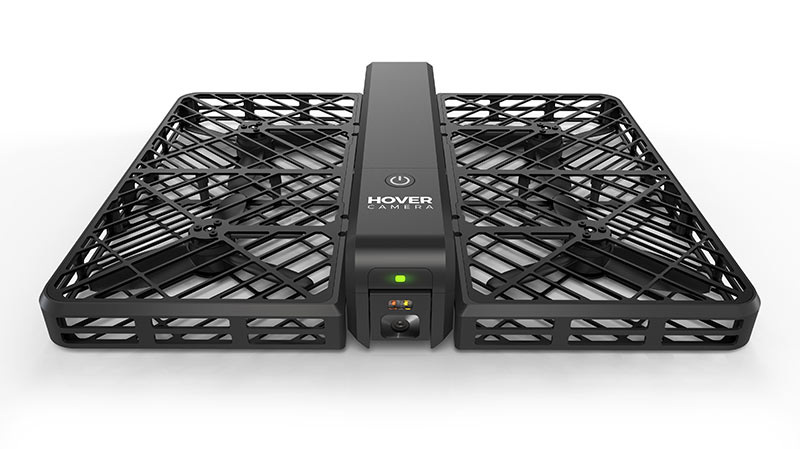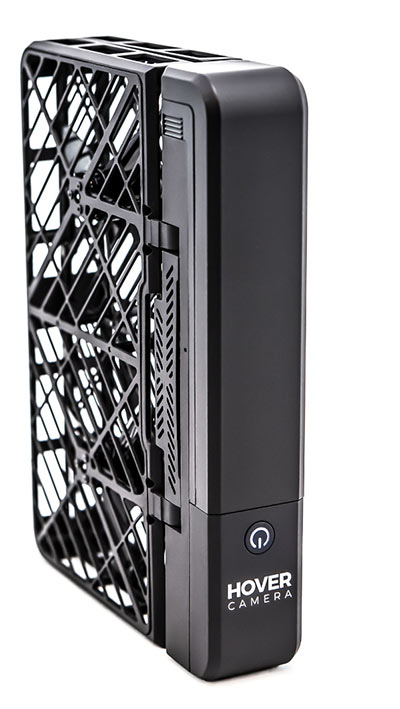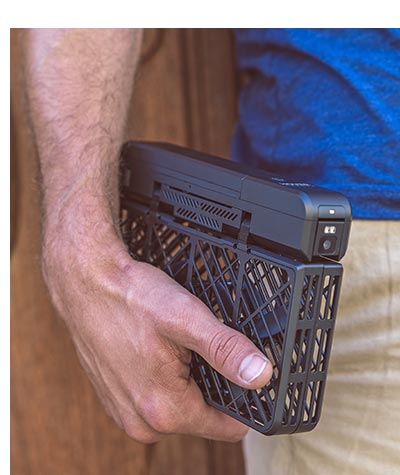Zero Zero Robotics, which raised $25 Million in funding from IDG, GSR Ventures, ZhenFund and ZUIG, has released their flying “selfie drone,” the Hover Camera Passport. This new category, which includes products like the Lily, is quietly heating up, and looks to be an exciting marketing segment for Millennials who just can’t seem to get enough footage of themselves making duck faces.

The Hover is Zero Zero Robotics’ first product and is designed to be safe, portable and savvy solution to allow let anyone to “effortlessly capture exciting moments indoors and out, from creative new perspectives.” Using Embedded AI to intelligently navigate its environment and the Qualcomm Snapdragon Flight drone platform, Hover Camera captures personal moments, but is not viable for tracking sports beyond the family Thanksgiving football game.

Hover Passport Features:
» 13 MP Photos & 4K Video
» SLAM (Simultaneous Localization and Mapping): Perceives and maps its surrounding 3D environment using its front-facing camera to accordingly position Hover Camera in space
» Tracking technology to “follow” either your Face or Body
» Electronic Image Stabilization
» Release & Hover: As soon as you let go, Hover Camera will hover in place
» Throw & Balance: Throw Hover Camera and it will intuitively balance itself for the best shot
» Portable & Lightweight: At just 238 grams, below the FAA 250 gram Hobbyist Drone Registration weight limit
» 360 Pano: Spinning while in a fixed position, Hover Camera captures 360 degrees of panoramic video footage
» Self-Positioning: Using sonar and a 3MP ground facing camera, Hover Camera hovers in place so that it’s able to be positioned “anywhere” in space like an invisible tripod.
Zero Zero Robotics was co-founded in 2014 by former Twitter software engineer and Stanford PHD, MQ Wang, and Stanford PHD Tony Zhang, and is headquartered in Beijing, with offices in San Francisco, Shenzhen, and Hangzhou. The Hover Camera Passport was developed using Zero Zero Robotics’ proprietary Embedded AI technology that enables it to run artificial intelligence algorithms on its proprietary compact printed circuit board (PCB), utilizing Snapdragon Flight, a drone development platform targeted specifically for drone applications. Snapdragon Flight features the Qualcomm Snapdragon 801 2.3Ghz Quad-Core processor, with GPS, 4K video capture, and wi-fi connectivity.
Zero Zero Robotics makes a lot of claims in its marketing materials and feature list, but does not deliver on any of them where it counts: quality video. The Hover Passport comes with a nice case, two batteries, and a dual charger. Its replaceable props are well-protected in a plastic cage. The lightweight, fold-out design is sexy and brilliant, but that’s where the fun ends. It takes a whopping 20 seconds to boot up and ready itself for flying selfie action, which is about 10-15 seconds too long to capture spontaneous moments. It maxes out at a height of about 15 feet and since its connectivity to the controller app is wi-fi based, it only can travel about 30 feet from your mobile before losing its connection and flying off on its own. Speaking of which, the face and body recognition follow algorithm, which Zero Zero touts heavily in its marketing materials, is not ready for prime time. In fact, it’s downright poor. The facial recognition only works when a face is looking at the camera dead on (not the back of the head cliff jump you see in their promo video) and only in high-contrast lighting. Magic hour (sunrise/sunset) and severely overcast days defeat the tracking technology entirely and the Passport ends up “leaving the scene.” Not good.

Zero Zero claims the Hover Passport has built-in image stabilization, but it’s easily thwarted by any sort of wind. Due to its lightweight nature, the Hover will wobble, roll and quiver in any sort of breeze over 5 mph, rendering your footage basically useless. And now here’s the kicker: even though the camera can shoot in 4K, the quality of the video is mediocre. A combination of a low-quality sensor and lack of image processing power appears to be the culprit. Downscaling to 1080 produces significant artifacts, so you’re reduced to blotchy, oversaturated footage that isn’t much better than the $100 toy camera drone you bought for your son, so he doesn’t trash your beloved DJI. Each battery lasts about 9-10 minutes of flight time and Zero Zero provides two in the package. Where the Hover Passport may make an impact is as an indoor camera drone. The protected propellers and small size work well in tight confines, but the poor low-light performance means you’ll be required to shoot in only well-lit areas.
The Future: While the Zero Zero Robotics Hover camera drone has a lot of fabulous ideas, it appears that it was pushed out to market way too soon in order to capitalize on holiday buying season. With the GoPro Karma and the DJI Mavic also competing for Christmas dollars, Zero Zero is going to have a hard time making a mark when savvy consumers look beyond the form factor.
Zero Zero Robotics’ Hover Camera Passport costs $599 and is available now.
Zero Zero Robotics

